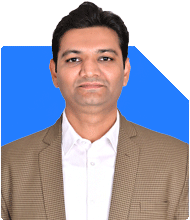I have around 4 lakhs in PPF as of now 2024 May and its going to mature by 2029 March . If I invest around 1.5 lakhs around every year from now it will 1.5*5 which is 7.5 lakhs and maturity amount will be around 15 lakhs with prevailing interest rate of 7.1 annually . Is it wise to invest this 1.5 lakhs annually in any Equity Mutual fund for over 5 years getting returns over 12-13% . Which option would be beneficial as PPF maturity amount is tax free.
Ans: Investing wisely requires understanding the potential returns, risks, and tax implications of different investment options. In your case, you are considering continuing your investment in the Public Provident Fund (PPF) versus shifting to an equity mutual fund. Let's explore these options in detail.
Understanding Your Current PPF Investment
You have Rs 4 lakhs in your PPF account, which will mature in March 2029. You plan to invest Rs 1.5 lakhs annually until maturity. The current interest rate for PPF is 7.1% per annum. PPF investments are attractive due to their tax-free returns at maturity.
Projected PPF Maturity Amount
With your planned annual contributions, let's calculate the projected maturity amount.
Current PPF balance: Rs 4 lakhs
Annual investment: Rs 1.5 lakhs for the next 5 years
PPF interest rate: 7.1% per annum
Maturity year: 2029
Given these inputs, the maturity amount can be calculated using the compound interest formula specific to PPF.
PPF Benefits
Tax-Free Returns: The maturity amount, including interest earned, is tax-free.
Risk-Free Investment: PPF is a government-backed scheme, ensuring safety of principal.
Fixed Returns: The interest rate, although subject to change, offers a predictable return.
PPF Limitations
Lower Returns: Compared to equity investments, PPF returns are relatively lower.
Lock-In Period: PPF has a long lock-in period, reducing liquidity.
Exploring Equity Mutual Funds
Equity mutual funds invest in stocks and have the potential to offer higher returns over the long term. You are considering an expected return of 12-13% per annum.
Projected Returns from Equity Mutual Funds
Let’s consider the potential growth of Rs 1.5 lakhs invested annually in an equity mutual fund with a 12-13% annual return over the next five years.
Equity Mutual Funds Benefits
Higher Potential Returns: Equity mutual funds generally offer higher returns than fixed-income investments like PPF.
Liquidity: Equity mutual funds are more liquid compared to PPF, allowing easier access to your money.
Diversification: Mutual funds provide diversification across different stocks and sectors.
Equity Mutual Funds Limitations
Market Risk: Returns are subject to market fluctuations, making them more volatile.
Tax Implications: Capital gains from equity mutual funds are subject to taxes, affecting net returns.
Comparative Analysis: PPF vs. Equity Mutual Funds
To determine the better investment option, let’s compare the projected returns and other factors:
PPF
Initial Investment: Rs 4 lakhs
Annual Investment: Rs 1.5 lakhs
Interest Rate: 7.1%
Maturity Amount: Approximately Rs 15 lakhs (total contributions + interest)
Tax-Free: Yes
Equity Mutual Funds
Annual Investment: Rs 1.5 lakhs
Expected Return: 12-13% per annum
Estimated Value: Higher potential returns, but subject to market volatility and taxation
Tax Implications: Long-term capital gains tax applicable
Calculation Example
If you invest Rs 1.5 lakhs annually in an equity mutual fund, assuming a 12% annual return, the approximate value after 5 years would be significantly higher than the amount invested in PPF.
Risk vs. Return Considerations
PPF
Low Risk: Government-backed, safe investment
Stable Returns: Fixed interest rate, predictable growth
Tax Benefits: Entire maturity amount is tax-free
Equity Mutual Funds
Higher Risk: Subject to market risks, returns can vary
Higher Returns: Potential to earn significantly more than PPF
Taxation: Long-term capital gains tax applies on returns
Assessing Your Financial Goals
Risk Tolerance: If you prefer safety and guaranteed returns, PPF is suitable.
Return Expectation: If aiming for higher returns and willing to take some risk, equity mutual funds are better.
Tax Considerations: PPF offers tax-free returns, while equity funds are taxed.
Recommendations
Given your investment horizon of five years and the goal to maximize returns, consider the following:
Diversified Approach
PPF: Continue investing Rs 1.5 lakhs annually for the tax-free, guaranteed returns.
Equity Mutual Funds: Allocate a portion of your funds to equity mutual funds for higher potential returns. This balanced approach mitigates risks while leveraging growth opportunities.
Regular Monitoring
PPF: Monitor interest rates and contributions.
Equity Funds: Regularly review fund performance and market conditions.
Consultation with a Certified Financial Planner
A Certified Financial Planner (CFP) can provide personalized advice, considering your financial goals, risk tolerance, and tax implications. They can help you create a balanced investment strategy that aligns with your objectives.
Conclusion
Investing Rs 1.5 lakhs annually in PPF offers stable, tax-free returns with minimal risk. However, equity mutual funds can provide higher returns, albeit with greater risk and tax implications. A diversified approach, combining both PPF and equity mutual funds, can balance safety and growth. Consulting a CFP will help tailor your investment strategy to meet your financial goals effectively.
Best Regards,
K. Ramalingam, MBA, CFP,
Chief Financial Planner,
www.holisticinvestment.in





























